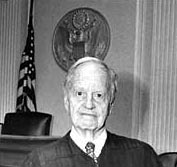Knapp Commission
Investigative committee From Wikipedia, the free encyclopedia
The Commission to Investigate Alleged Police Corruption (known informally as the Knapp Commission after its chairman Whitman Knapp) was a five-member panel formed in May 1970 by Mayor John V. Lindsay to investigate corruption and misconduct within the New York City Police Department (NYPD).[1] The creation of the Commission was largely a result of publicized accounts of police wrongdoing, as revealed by Patrolman Frank Serpico and Sergeant David Durk. Lindsay's action was also prompted by a front-page exposé in The New York Times on April 25, 1970 that documented a vast scheme of illicit payments to police officers from businessmen, gamblers and narcotics dealers.[2] In its final report, the Commission concluded that the NYPD had widespread corruption problems,[3] and made a series of recommendations.

Members
On May 21, 1970, Mayor Lindsay issued an executive order appointing the following five members to serve on the Knapp Commission:[1]
- Whitman Knapp, chair
- Arnold Bauman (later replaced by John E. Sprizzo)
- Joseph Monserrat
- Franklin A. Thomas
- Cyrus Vance
Investigation and public hearings
Summarize
Perspective
The Knapp Commission started its investigation in June 1970. Michael F. Armstrong served as chief counsel to the Commission, and Nicholas Scoppetta was associate counsel.[4][5]
After taking private testimony for over a year, the Knapp Commission initiated public hearings on October 18, 1971.[6] In addition to interviewing "lamplighters" (whistleblowers) Serpico and Durk, the Commission heard testimony from former Police Commissioner Howard R. Leary, corrupt patrolmen, and victims of police shakedowns.[7] As a result of the testimony of these witnesses, criminal indictments against corrupt police officials were handed down.
Concurrent with the Knapp Commission inquiry, Mayor Lindsay directed Police Commissioner Patrick V. Murphy to implement NYPD reforms. These included proactive integrity checks, large-scale transfers of senior personnel, mandatory job rotation in key areas, ensuring sufficient funds to pay informants, and cracking down on citizen attempts at bribery.[8]
On June 15, 1972, Whitman Knapp was nominated by President Richard M. Nixon to be a federal judge for the Southern District of New York.[9] However, Knapp stayed with the Commission through the end of the year to complete the work.
Recommendations
Summarize
Perspective
The Knapp Commission issued a preliminary report in August 1972, and a final report in December 1972.[10] In its final report, the Commission found widespread corruption in the NYPD, and made the following recommendations:
- hold commanders accountable for their subordinates' actions.
- require commanders to file periodic reports on key areas that would breed corruption.
- create field offices of the Internal Affairs division in all precincts.
- place undercover informants in all precincts.
- improve screening and selection methods and standards.
- strive to change police attitudes toward corruption.
- enlist public support in the battle against corruption.[10]
"Grass Eaters" and "Meat Eaters"
The Knapp Commission Report on Police Corruption categorized two types of corrupt police officer: "Grass Eaters" and "Meat Eaters". This classification scheme distinguished petty corruption under peer pressure ("eating grass") from aggressive, premeditated major corruption ("eating meat").[11]
The term "Grass Eaters" described police officers who "accept gratuities and solicit five, ten, twenty dollar payments from contractors, tow-truck operators, gamblers, and the like but do not pursue corruption payments".[12] "Grass eating" was something that a significant number of officers were guilty of, and which they learned to do from other cops or from imitating the deviants they watched and investigated every day. The Commission concluded that "grass eating" was used by NYPD officers to prove their loyalty to the "brotherhood", and with that came incentives like side jobs.[13] One method to prevent cops from becoming corrupt was to remove the veteran cops who indulge in corrupt practices. Without veteran cops to emulate, new officers might never learn to "eat grass".
"Meat Eaters" described officers who "spend a good deal of time aggressively looking for situations they can exploit for financial gain".[12] An example was shaking down pimps and illicit drug dealers for money. The Commission noted that Meat Eaters "justified this extortion by marginalizing their victims as criminals and undeserving of police protection."[13]
See also
Further reading
- Armstrong, M. (2012). They Wished They Were Honest: The Knapp Commission and New York City Police Corruption. New York: Columbia University Press ISBN 978-0231153546
- Barker, T. (1978). An Empirical Study of Police Deviance Other Than Corruption. Journal of Police Science and Administration 6(3): 264-72.
- Barker, T. & D. Carter (1990). Fluffing Up the Evidence and Covering Your Ass: Some Conceptual Notes on Police Lying. Deviant Behavior 11: 61-73.
- Barker, T. & D. Carter (Eds.) (1994). Police Deviance. Cincinnati: Anderson. ISBN 978-0870847141
- Chin, G. (Ed.) (1997) New York City Police Corruption Investigation Commissions. New York: William S. Hein & Co. ISBN 978-1575882116
- Chin, G.; Wells, Scott (1998). "The 'Blue Wall of Silence' as Evidence of Bias and Motive to Lie: A New Approach to Police Perjury". University of Pittsburgh Law Review. 59: 233 – via SSRN.
- Daley, Robert (1973). Target Blue, An Insider's View of the N.Y.P.D. New York: Delacorte Press.
- DeLattre, E. (5th ed. 2006) Character and Cops: Ethics in Policing. Washington DC: AEI Press. ISBN 978-0-8447-4217-5
- Dershowitz, A. (1996). Reasonable Doubts. New York: Simon & Schuster.
- Kania, R. & W. Mackey (1977). Police Violence as a Function of Community Characteristics. Criminology 15: 27-48.
- Kappeler, V., R. Sluder & G. Alpert (1994). Forces of Deviance: Understanding the Dark Side of Policing. Prospect Heights, IL: Waveland Press.
- Kleinig, J. (1996) The Ethics of Policing. New York: Cambridge Univ. Press.
- Knapp Commission Records, Lloyd Sealy Library Special Collections, John Jay College of Criminal Justice (view upon appointment only)
- Knapp Commission (1973). The Knapp Commission Report on Police Corruption. New York: George Braziller. ISBN 978-0807606889
- Sherman, L. (1974). Police Corruption: A Sociological Perspective. Garden City, NJ: Doubleday.
- Trautman, N. (1997). The Cutting Edge of Police Integrity. FL: Ethics Inst.
References
External links
Wikiwand - on
Seamless Wikipedia browsing. On steroids.
